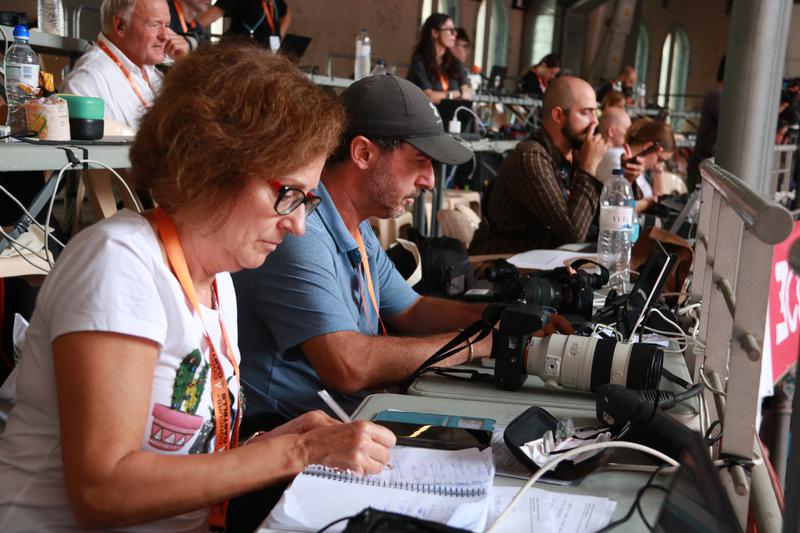‘I am to be sent to Lebanon, but have been able to delay it until human tower contest is over’
National Geographic or The Times among international media in the event

The world-class photojournalist Emilio Morenatti, who works for the Associated Press, will sooner or later go to Lebanon to cover the war in the Middle East – yet, not for now.
Talking to Catalan News on Sunday from Tarragona, where the biggest day of the biennial human towers contest was being held, he two-time Pulitzer prize winner said that he is “to be sent to Lebanon, but have been able to delay it until the contest is over.”
His first time in the ‘concurs’ was over a decade ago, and since then he tries not to miss it.
For Morenatti, no matter how many years he has covered the event, “it is very emotional.” Especially, since he spends part of the time hanging over a sort of catwalk with a harness to take the best photo possible from above.
His works, he explains, are very likely to show in top newspapers such as The Washington Post or The New York Times.
He was one of the first international professionals covering the competition, and says the work of the pioneers “prompted others to cover it” in the subsequent editions.
For him, human towers “are a metaphor for the Catalan identity” – especially, because of the base of each construction, which is called ‘pinya’ in Catalan, is the quintessential evidence of how much effort among all genders and ages is key in this tradition.
He is one of the dozens of international journalists who are covering the event. Other famous media are also present, such as The Telegraph or The Times, with its correspondent in Madrid David Sharrock. He is one of the group of journalists in the venue in a visit organized by Catalunya Internacional, formely known as Diplocat.
Also talking to Catalan News, he denies the show being “scary”, but rather “exciting.”
Sharrock explains that he found out about the tradition while watching a documentary about the Catalan independence referendum, but he adds that is nothing to do with witnessing it live.
“There is a lot of social cohesion, teamwork, it is great.”
The National Geographic also attended the competition, since they are filming a documentary exploring the mathematics behind the construction of 'castells'.
“There is a lot of science in the human towers,” producer Eva Martinez Lambert tells Catalan News. They are focusing on the “shapes and geometries” needed for such structures to succeed.
“There are loads of connections with physics and mathematics.”